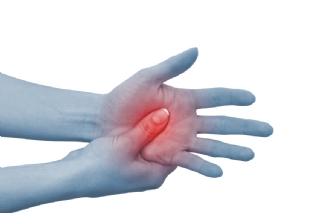Ulnar Neuropathy: Symptoms, Treatment, Exercises
What Is Ulnar Neuropathy?
Ulnar neuropathy is an inflammation of the ulnar nerve, a major nerve in your arm that runs down into your hand. It supplies movement and sensation to your arm and hand. Ulnar neuropathy can cause numbness, tingling, or pain into the arm and hand on the side of the little finger. Bicyclists call this condition handlebar palsy.
Ulnar Neuropathy Symptoms:
The ulnar nerve may get inflamed in several areas as it travels from your neck to your hand. The ulnar nerve is commonly inflamed during bicycling from repeated shocks or bouncing while your hand is holding onto the handlebar. The nerve may be stretched when held in the lower position of a drop handlebar. Other activities that involve repetitive movements of the wrist may cause ulnar neuropathy. The symptoms of ulnar neuropathy include numbness and tingling, or pain in the forearm or hand on the side of the little finger.
How Is It Diagnosed?
Your doctor will ask about your symptoms and examine your neck, shoulder, arm and wrist. Your doctor may refer you to a specialist to have tests done, such as a nerve conduction study (NCS) and electromyogram (EMG).
Conservative Treatment For Ulnar Neuropathy?
It is important to try to find and eliminate the cause of your ulnar neuropathy. You may be prescribed a wrist brace for ulnar pain to reduce the discomfort. When you are bicycling, it might help to wear padded gloves. You might also try adjusting the position of your hands on the handlebar, such as by changing your grip form the top to the sides of the handlebar. Your doctor may prescribe anti-inflammatory medications or B vitamins.
When Can I Return To My Sport Or Activity?
The goal of rehabilitation is to return you to your sport or activity as soon as is safely possible. If you return too soon you may worsen your injury, which could lead to permanent damage. Everyone recovers from injury at a different rate. Return to your sport or activity will be determined by how soon your nerve recovers, not my how many days or weeks it has been since your injury occurred. In general, the longer you have symptoms before you start treatment, the longer it will take to get better.
You may return to your sport or activity when you are able to forcefully grip your tennis racquet, bat, or golf club, or do activities such as working at a keyboard without pain or tingling in your elbow or hand.
How Can I Prevent Ulnar Neuropathy?
Ulnar neuropathy is caused by activities that inflame the ulnar nerve. Try to eliminate activities that cause repetitive motion of the wrist, which can irritate your ulnar nerve. When you are bicycling, change your hand position on the handlebar frequently.
Ulnar Neuropathy Exercises:
You may do all of these exercises right away.
1. Cervical range of motion exercises (neck):
A. Rotation: Slowly turn your head toward your shoulder, keeping your chin level. Hold for 10 seconds; Bring your head back to the neutral position. Then turn your head to the opposite shoulder.
B. Neck flexion: Bend your neck so that your chin touches your chest. Hold for 10 seconds. Bring your head back to the neutral position.
C. Neck extension: Slowly tilt your head backward so that your chin is pointing towards the ceiling. Hold for 10 seconds. Note: If this position causes you to be dizzy or if it brings on symptoms in your arm, do not do this exercise.
D. Side bend: Looking straight ahead, bring your ear toward your shoulder. Hold for 10 seconds. Return your head to the upright position. Repeat on the opposite side.
2. Shoulder depression: Facing straight ahead, pull your shoulder blades down and back. Hold for 10 seconds. Relax. Repeat 10 times.
3. Elbow range of motion: Bend your elbow forward and backward. Repeat 10 times.
4. Wrist range of motion: Bend your wrist forward and backward. Repeat 10 times.
5. Straight finger flexion: Make a right angle with your knuckles and keep your fingers straight. Hold this position for 10 seconds. Repeat 5 times.
6. Finger squeeze: Practice squeezing items between each of the fingers on your involved hand. You can use paper, pens, and sponges. Hold for 10 seconds. Repeat 5 times for each finger.
7. Finger flexion: Practice squeezing a rubber ball and hold 10 seconds. Repeat 10 times.
All material provided is designed for information purposes only and should not be used to replace the care of a health care professional. Do not rely on any of the information for diagnosis or treatment. It is recommended that you visit a qualified health care professional for individual and personal attention.
